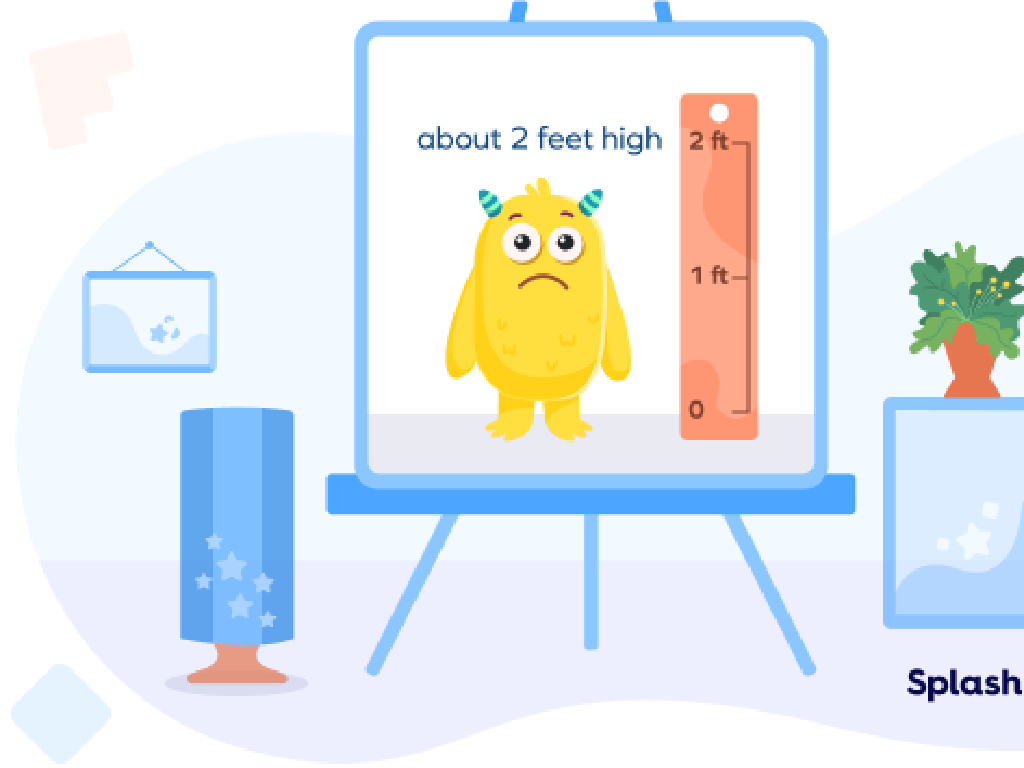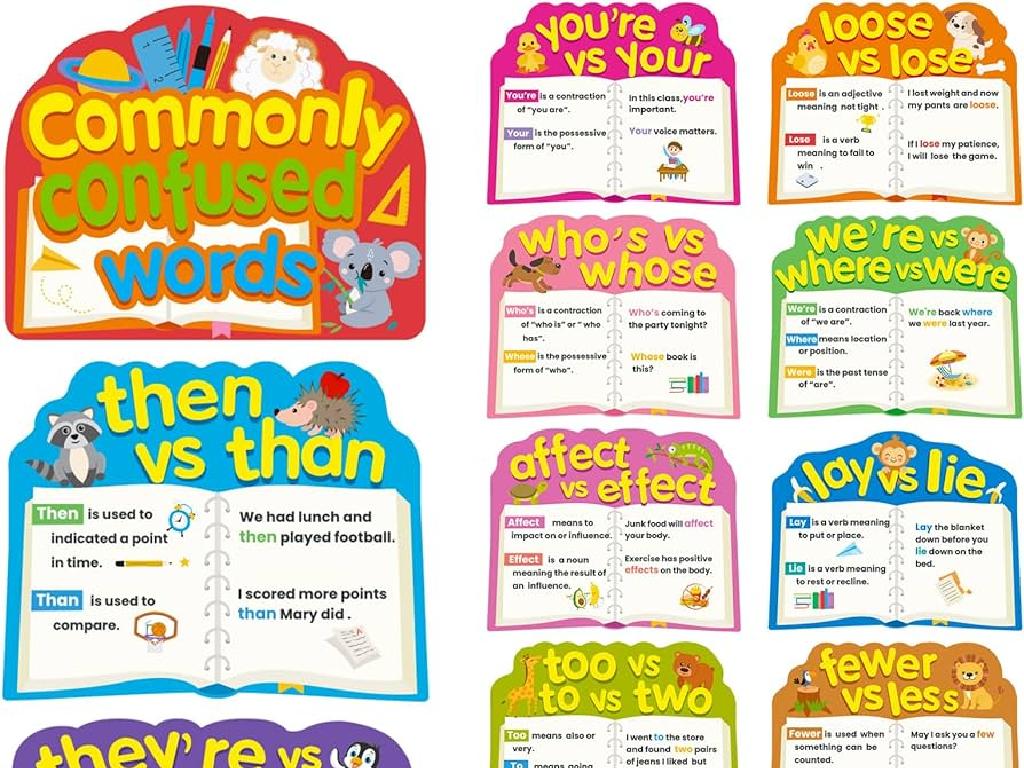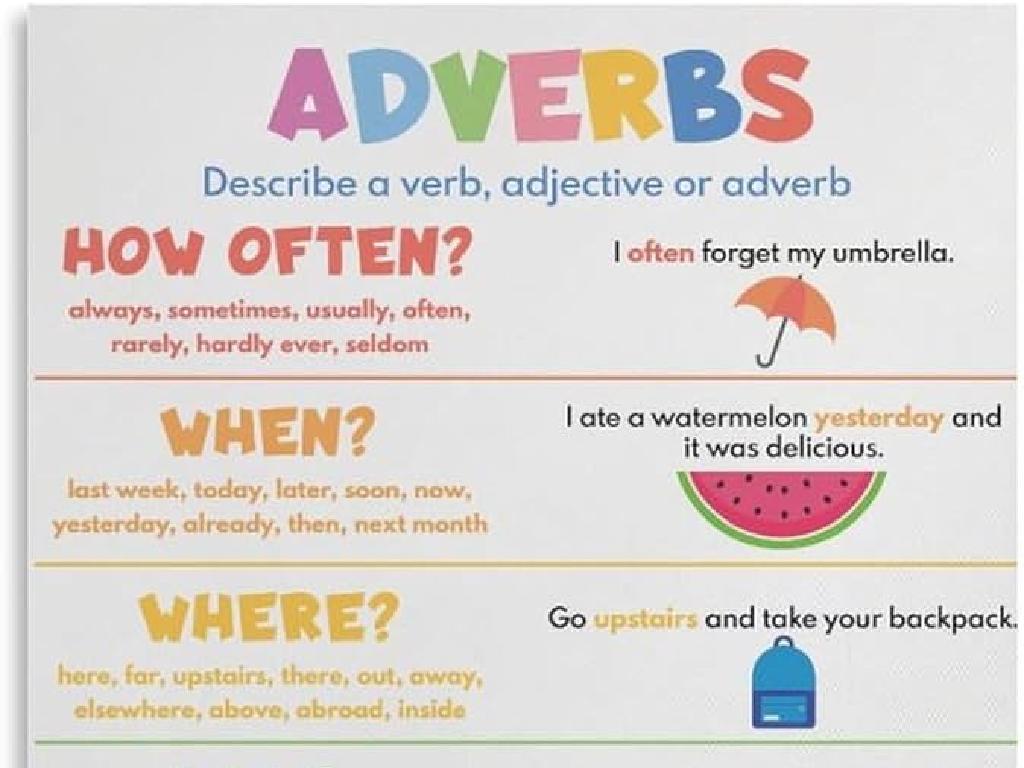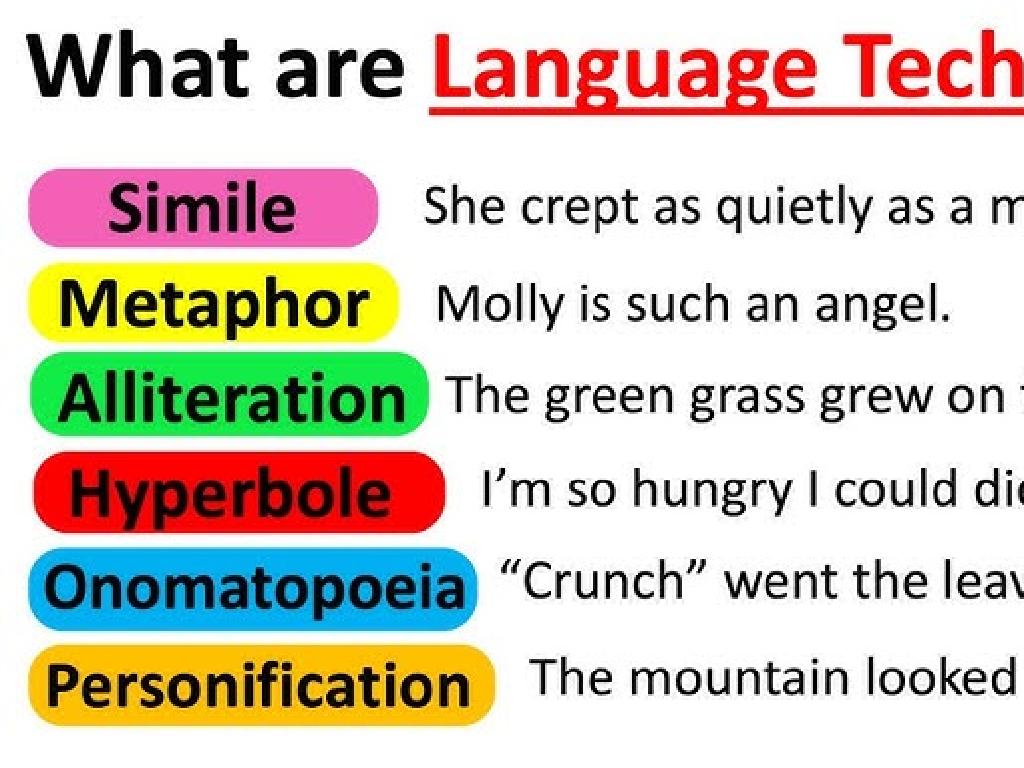Unit Prices With Customary Unit Conversions
Subject: Math
Grade: Sixth grade
Topic: Consumer Math
Please LOG IN to download the presentation. Access is available to registered users only.
View More Content
Understanding Unit Prices
– What are unit prices?
– Price per single unit of an item, like per ounce or per liter.
– Importance of calculating unit prices
– Helps to find the best deal and save money.
– Unit prices in everyday shopping
– Comparing cost of milk by gallon vs. quart, or cereal by ounce.
– Converting units for price comparison
– Use conversion to compare prices in different units, like pounds to ounces.
|
This slide introduces the concept of unit prices, which is a crucial skill in consumer math for making informed and economical choices. Explain that a unit price is the cost per single unit of measurement, which allows for a fair comparison between different sized packages. Emphasize the importance of calculating unit prices to identify the best value for money, using relatable examples such as buying groceries. Discuss real-life scenarios where students can apply this knowledge, like choosing between brands or bulk purchases. Teach the students how to convert between customary units, such as gallons to quarts or pounds to ounces, to ensure accurate comparisons. Provide practice problems for students to apply these conversions in calculating unit prices.
Understanding Unit Prices
– Define Unit Price
– Price per single unit of measure, like $/pound
– Calculate unit price
– Divide total cost by number of units
– Everyday unit price examples
– Milk: $3 for a gallon, Apples: $2 for a pound
– Practice finding unit prices
|
This slide introduces the concept of unit price, which is a critical component of consumer math and helps in making informed shopping decisions. Start by defining unit price as the cost per single unit of measure, which allows for price comparisons between different products and sizes. Demonstrate how to calculate unit price by dividing the total cost by the number of units. Use common grocery items as examples to show how unit prices can vary and how to find the best deal. Encourage students to practice finding unit prices during their next shopping trip as a practical application of what they’ve learned.
Understanding Customary Units of Measure
– Review U.S. Customary Units
– Length (inches, feet), weight (ounces, pounds), volume (cups, gallons)
– Appropriate usage of each unit
– Use length for distance, weight for how heavy, volume for liquid capacity
– Conversion between units
– Learn how to change ounces to pounds and more
– Practice with real examples
|
This slide aims to refresh students’ knowledge of the U.S. Customary Units for length, weight, and volume. Discuss when it’s appropriate to use each type of unit, such as inches or feet for measuring length, ounces or pounds for weight, and cups or gallons for volume. Emphasize the importance of selecting the right unit for the measurement to make sense in real-world situations. Teach the students the conversion factors between units, like 16 ounces equals 1 pound, and provide practice problems that involve converting between different units. Use everyday examples, such as comparing the weight of a bag of apples in ounces and pounds, to make the concept relatable.
Calculating Unit Prices
– Learn the unit price formula
– Unit price = Total cost / Quantity
– Example: Calculate with us
– If a 12-pack of socks costs $24, what s the unit price per pair?
– Unit prices guide shopping
– Find the best deal by unit price, not total cost
– Compare prices effectively
|
This slide introduces students to the concept of unit pricing, an essential skill for making informed consumer decisions. Start by explaining the formula for calculating unit prices, which is the total cost divided by the quantity. Work through a practical example, such as calculating the unit price of a pack of socks, to illustrate the concept. Emphasize how understanding unit prices can help consumers compare different products and choose the best value, regardless of package size or price. Encourage students to practice with real-life examples from grocery or department store flyers, and to bring their findings to the next class for discussion.
Unit Price Practice: Mastering Measurements
– Solve practice problems with varied units
– Pair up for unit price calculations
– Work together to find the price per unit
– Discuss solutions and strategies
– Share different approaches to find the best one
– Reflect on learning and methods
– Think about what worked and what didn’t
|
This slide is designed for an interactive class activity focused on calculating unit prices with customary unit conversions. Students will engage with a variety of practice problems that require them to apply their knowledge of unit conversions in a practical context. By working in pairs, students can collaborate and learn from each other, fostering a deeper understanding of the concept. After calculations, pairs will share their answers and the methods they used with the class, allowing for discussion of different strategies and promoting critical thinking. The teacher should circulate to provide guidance and ensure that each pair understands the process. Possible activities include comparing unit prices of different brands of the same product, calculating the cost per ounce for various items, or determining the best buy in bulk purchases. The reflection at the end helps students to consolidate their learning and recognize areas for improvement.
Unit Conversions and Unit Prices
– Converting units for price comparison
– Example: Pounds to ounces for unit prices
– If a bag of apples is 2 pounds and costs $4, how much is it per ounce?
– Class activity: Unit conversion practice
– Work together to convert various items as a class exercise
– Understanding unit price calculations
– Learn how to divide the total price by the total number of units
|
This slide introduces the concept of unit conversions in the context of calculating unit prices, an essential skill in consumer math. Start by explaining why it’s important to convert units before comparing prices, as items may be labeled in different units of measurement. Use the example of converting pounds to ounces to demonstrate how to compare prices of items sold in different weight units. Engage the class with a hands-on activity where students practice converting units for various items. Conclude by showing how to calculate the unit price by dividing the total price by the total number of units, reinforcing the real-world application of math in everyday shopping.
Class Activity: Supermarket Sweep!
– Receive list of items with prices
– Calculate each item’s unit price
Divide the total price by the quantity or weight to find the unit price.
– Determine best deals by unit price
Compare unit prices to see which item offers more value for money.
– Discuss findings with the class
|
In this engaging activity, students will apply their knowledge of unit prices and customary unit conversions to real-world scenarios. Provide a list of grocery items with varying prices and units (e.g., pounds, ounces, gallons). Students will calculate the unit price for each item to determine which offers the best value. This exercise will help them understand how to make cost-effective choices when shopping. After calculations, facilitate a class discussion where students justify their decisions on the best deals. For differentiation, consider varying the complexity of the items and units provided. Possible activities include comparing brand name vs. generic items, bulk vs. single-purchase items, or items on sale vs. regular-priced items.
Conclusion & Homework: Smart Shopping
– Recap: Unit prices & conversions
– Why unit prices matter
– Helps make better buying decisions
– Homework: Compare unit prices
– Find items at home/store, calculate & compare their unit prices
– Be a savvy shopper!
|
Today’s lesson covered how to calculate unit prices and perform customary unit conversions, which are essential skills for making cost-effective and smart consumer choices. Understanding unit prices allows consumers to compare different products and sizes on a per-unit basis, leading to more informed decisions. For homework, students should find items around their home or at a local store, note the total price and quantity, and calculate the unit price. They should compare these prices to see which items offer the best value for money. This exercise will help reinforce today’s lesson and give practical experience in applying math skills to real-life situations.






